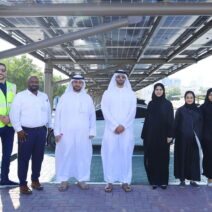In the heart of our modern existence, energy consumption lurks as a silent giant, dictating not only our household bills but also our collective impact on the environment. Space heating, a significant component of our energy usage, offers a profound opportunity to both enhance comfort and mitigate costs, all while taking meaningful strides towards sustainability. Understanding how energy used for space heating can be conserved is integral to the discourse on climate change and energy efficiency.
First, let’s investigate the intricacies of space heating itself. Primarily, this energy is deployed to raise indoor temperatures, particularly in colder seasons. Conventional methods of heating include furnaces, boilers, heat pumps, and traditional electric heaters. However, these systems are sometimes inefficient, leading to excessive energy expenditure and higher bills. In contrast, adopting rigorous energy conservation strategies equips homeowners and businesses to fortify their economic and environmental standing.
One of the paramount practices in conserving energy for space heating is through improving insulation. Insulation acts as a barrier against heat loss; without it, primal energy resources are squandered. Homes and buildings can be fortified with materials that possess high thermal resistance, like fiberglass, cellulose, or foam. Choices depend on budget and building design, but investing in upgrading insulation not only enhances comfort but also dramatically reduces heating needs. Attics, walls, floors, and even basement areas are ripe for such energy-efficient infrastructure advancements.
Windows are another major conduit for energy loss. Traditional single-pane windows allow substantial heat escape, necessitating increased heating efforts. The solution lies in window upgrades—double or triple-glazed windows provide an effective thermal barrier. Alternatively, utilizing thermal curtains or window films can diminish heat loss without extensive renovations. These enhancements promise to seal our homes against the chill, all while keeping utility bills in check.
Moreover, one cannot overlook the efficiency of the heating systems themselves. Many existing heating units operate at less than optimal performance levels due to age or neglect. Regular maintenance, including inspections and tune-ups, is crucial for ensuring that systems run efficiently. Homeowners should also consider upgrading to Energy Star-rated appliances, as these modern systems possess advanced technology aimed at reducing energy consumption.
Beyond physical barriers and equipment, behavioral modifications can wield substantial impact. Adjusting thermostat settings—lowering them by a mere degree or two—can lead to notable energy savings. For example, setting thermostats to 68°F during the day and lowering it overnight can save up to 10% on heating costs. Embracing such simple yet effective practices facilitates a communal approach to conservation, where every degree plays a role in a larger narrative.
Ventilation strategies also deserve attention. An often-overlooked aspect of energy conservation, proper ventilation can minimize heat loss. Technologies such as heat recovery ventilators (HRVs) circulate warm air while recovering heat from exhaust, ensuring that homes remain cozy without unnecessary energy waste. Innovative building designs, including passive solar heating, harness natural energy from the sun to maintain warm temperatures, further merging comfort with sustainability.
Renewable energy sources introduce another layer of innovation in space heating. Solar thermal panels, for instance, convert sunlight into heat that can be used directly for winter warmth. Pairing these systems with existing heating infrastructure not only diminishes reliance on non-renewable resources but can dramatically lower energy bills over time. As renewable technologies evolve, the integration of these systems into home heating strategies becomes more viable, promising a cleaner, greener future.
Community engagement and policy-making also play crucial roles in the broader spectrum of energy conservation. Advocacy for policies that promote energy efficiency can catalyze change at a governmental level, leading to more robust support for funding energy-saving initiatives. Communities are increasingly banding together to share resources and knowledge—creating local energy conservation programs that engage residents in reducing their overall energy footprints through cooperative efforts.
In addition to high-efficiency appliances and informative community programs, incentives such as tax credits and rebates for energy-efficient investments can alleviate the financial burden of retrofits. Legislative frameworks that encourage building codes aimed at energy efficiency pave pathways for sustainability. When local governments endorse progressive energy policies, they set precedents that resonate within their communities, uplifting collective accountability to combat climate change.
Lastly, education emerges as a cornerstone of effective energy conservation strategies. By disseminating knowledge regarding the significance of energy efficiency, homeowners become equipped to make informed decisions. Workshops, informational seminars, and online resources can catalyze a paradigm shift in how individuals approach energy consumption for space heating. When awareness flourishes, it engenders motivation—a driving force behind meaningful action.
As we traverse these integral aspects of energy conservation for space heating, the intersections of comfort, cost-efficiency, and environmental stewardship become more apparent. It is incumbent upon all of us to reframe our perceptions and embrace innovative practices. The commitment to conserving energy not only leads to warm homes but also translates to lower bills—presenting the unique opportunity to enhance our living spaces while safeguarding the planet for future generations. Every action, no matter how small, contributes to a larger tapestry of change; the journey starts with a single decision to embrace energy efficiency.








